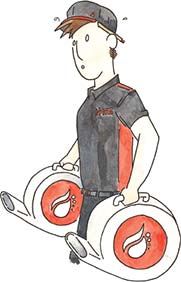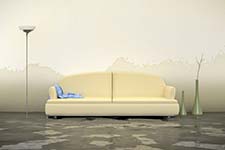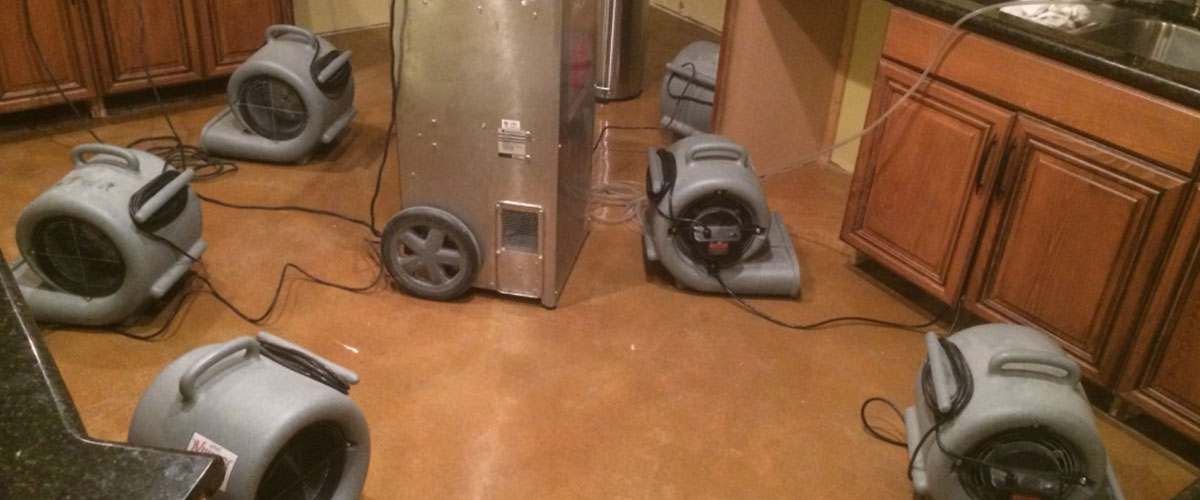 Water Damage Restoration in Memphis
Water Damage Restoration in Memphis
Call us now if you have an active leak or flowing interior water. Our water damage company will walk you through the process of safely shutting off the water to your property. It is important to stop the flowing interior water as quickly as possible. Less water equals less damage. Our company answers calls 24 hours a day, 7 days a week. Call us any time. If you cannot shut off your water or feel you cannot do it safely, do not worry, we will be on our way shortly. Our company can stop the flow of interior water in a safe and efficient manner. Independent Restoration Services of Memphis is proud to be a local company. We respond immediately to all water damage calls and are quickly able to get everything under control.
A vast majority of our calls are for water damage services. Walking into a home or business that has water damage creates a feeling of helplessness. Most people do not know where to turn or what to do. Our water damage company is here to provide a path back to normalcy. We are an independent restoration company which works directly with insurance agencies.
The primary factors that determine the extent of water damage in a property are:
 The Quantity of Water – The quantity of the water that has been released into the property impacts the extent of the water damage. The more water there is the more damage there will be to the property.
The Quantity of Water – The quantity of the water that has been released into the property impacts the extent of the water damage. The more water there is the more damage there will be to the property.
The Length of Time – The longer period of time your home is exposed to water, the more damage it will cause. A water damage company is always in a race against the clock. Water damage company’s goal is to have the entire property’s humidity level below 55% within 48 hours. That’s due to the fact that mold growth can start in as little as 48 hours.
Those are the two important factors that affect the extent of the water damage to a property. However, there are several other contributing factors that play a significant role in determining the necessary procedures and timeline of a water damage restoration project.
Type of Water
The cleanliness or contamination level of the water plays a significant role in determining the process that should be used for a water damage cleanup project.
There are three different categories of water:
Category 1 – Water that is considered to be clean.
- Water that has come from a broken washing machine water supply line. This is a leak that happens far more often than you might imagine. The most common cause of a washer supply line failure is a compromised seal that connects to the faucet. The seal bridges the gap between the water supply lines and the water faucet. When a water seal is connected to a particular faucet for an extended period of time, the seal will mold to the exact shape and position it is in. Therefore, if the water supply line is removed from the faucet and then reconnected, it will likely not line up with the faucet the same exact way it was prior to being removed. The misalignment is what causes the water supply line to leak. If you move to a new home or buy a used washing machine with existing water supply lines you should replace the water supply lines. Spending ten dollars on water supply lines can save you thousands. The seals can also dry out which will lead to cracking or shrinkage. Most home improvement and appliance specialists recommend changing out water supply lines every 3 to 5 years.
- An overflowing sink or bathtub. Most of us have been there at one time or another. We start running water and then forget it is running, before we know it, the sink or tub is on the verge of overflowing. Parents of small children know that an overflowing tub is a plausible reality any day of the week.
- A burst water supply line pipe. Pipes can get burst in a number of different ways. The most common way a pipe will burst is due to freezing. During the colder months in Memphis, it is not uncommon for temperatures to drop below freezing. When a pipe bursts it can actually go undiscovered for days or even weeks. This is due to the fact that ice keeps the unfrozen water contained within the pipe. It is only when the pipe thaws that the true extent of the damage is evident. A pipe may also be burst during a home improvement project. This is an unfortunate reality. A single screw or nail in the wrong place can cause extensive water damage.
Despite the fact that all of those types of water damage can be devastating, category 1 water is the least dangerous.
Category 2 – Water that contains significant levels of contaminants. The contaminated has the capacity to make people sick if they come into contact with the water. It is important to note that category 2 water types that are not quickly removed can be reclassified as a more severe category 3 water type.
- Sump pump failures. Sump pumps are designed to pump water away from the house. They are for homes with a water table that is higher than the foundation. The most common cause of sump pump failure is when a float mechanism designed to trigger the switch within the pump gets stuck. When the pump does not turn on, it will cause the floors above the natural water table level to flood. This can be particularly costly for homes with a finished basement. The water in the ground can have contaminants such as herbicides, pesticides, and other pollutants that would cause the water to be categorized as a category 2.
- Washing machine and dishwasher drainage. Washing machines can use as much as 15-45 gallons per load of laundry. The water that is discharged from a washing machine can hold bacteria and chemicals which can be harmful under the right circumstances. The drainage hose on washing machine is usually attached by a clamp-like mechanism. It can come loose on the inside of a washing machine if there is significant enough tension to on the drainage hose. However, most washing machine drainage mishaps are the result of the hose coming out of the outlet box. When someone moves the washing machine, the hose can easily come out of the outlet box. Then they forget to place it back in the drainage box when the washing machine is put back into place. Kids and pets have been known to cause the drainage hose to be dislodged. Dishwashers, although rarely moved, can have the same scenario take place. The drainage hose is damaged or separated from the dishwasher when it is moved.
- Toilet overflow. If your toilet overflows and it does not have fecal matter in it, it’s considered category 2 water. We all know a toilet can become clogged in a number of different ways. Those of you who have small children know that a clogged toilet is an at-any-moment reality. While these types of mishaps don’t usually result in a large quantity of water making its way into the house, the water that comes out of a toilet is certainly unsanitary.
Category 3 – This water is considered severely contaminated. The water may contain harmful bacteria, chemicals, fungi, toxins, or other harmful substances. Category 3 water drastically impacts the quality of the indoor environment.
- Water that contains sewage. Sewage is a particularly dangerous contaminate. Sewage already has a well-deserved reputation for being revolting. However, most people do not know how harmful sewage can be. Sewage has human fecal matter which can contain harmful pathogens such as protozoa, bacteria, viruses, & parasites.
- Protozoa – Some of the most recognizable harmful protozoa include: Giardia which can cause dysentery and Plasmodium which can cause Malaria.
- Bacteria – Salmonella, Campylobacter, Shigella, and Cholera are all types of bacteria are found in fecal matter and can make you severely ill. These types of bacteria will generally give someone intestinal issues which will certainly make them miserable. However, they are able to be overcome with the right medicine.
- Viruses – Sewage can contain some very serious viruses such as Hepatitus A, Human Papilloma Virus, Entero Viruses, and Rotavirus just to name a few. There are actually thousands of different viruses that exist in fecal matter. Each one has the capacity to cause harm to humans if introduced to the right environment and circumstances.
- Parasites – Even if parasites were not found in category 3 water, sewage would still be incredibly dangerous. Some of the most recognizable parasites that are found in fecal matter include flatworms, roundworms, tapeworms, and hookworms. All of which have the ability to make you very sick.
- Water from rivers or streams. Water coming from these natural sources are also considered a category 3 water type. Due to Memphis’s proximity to major rivers, category 3 water damage from river water is a very real possibility.
- Sewage – We have already outlined the dangers of sewage exposure above. River and stream water will contain sewage especially if it is during a flood. While the bacteria, viruses, parasites, and protozoa will be at lower levels than raw sewage by itself, the river water will carry a large number of other toxic materials not found in raw sewage.
- Pesticides and Herbicides – It’s no surprise to most that farms use large quantities of pesticides and herbicides. Exposure to pesticides and herbicides can be very harmful and have long term health consequences. Long term exposure to the active ingredient in herbicides, Glyphosate, has been linked to cancer.
- Heavy Metals – Heavy metals can be found in most bodies of fresh water. The Mississippi River that runs through Memphis is certainly no exception. Some of the most harmful heavy metals known to mankind can be found in our local rivers and streams. Heavy metals that can be found in the local river water include: Lead, Mercury, Cadmium, and Copper.
Some of the dangerous pollutants found are outlined below:
Homeowner insurance companies started carefully rewording their exclusions section of their policies to exclude category 3 water damage. Category 3 water damage is the most expensive because it requires the most time and labor to properly cleanup. While homeowner insurance policies once covered these types of water damage cleanup projects, they strategically started modifying their policies in the early 2000’s. Be prepared for exclusions in your policy when dealing with category 3 water types.
Classes of Water Damage
 Now that we have discussed water categories we will discuss different classes of water damage. There are four classes of water damage. Determining the class of water damage is one of the first steps during a water damage restoration project. Classes are categorized by the rate in which water will evaporate from the materials and water exposed area. Classes will determine what equipment is used, where it will be used, and even how long it will likely be before the equipment dries out the water. Reading the classes below will help you determine what class your water damage will fall into.
Now that we have discussed water categories we will discuss different classes of water damage. There are four classes of water damage. Determining the class of water damage is one of the first steps during a water damage restoration project. Classes are categorized by the rate in which water will evaporate from the materials and water exposed area. Classes will determine what equipment is used, where it will be used, and even how long it will likely be before the equipment dries out the water. Reading the classes below will help you determine what class your water damage will fall into.
Class 1 – The first class of water damage is the least severe of the four classes. Water damage in this class has the slowest rate of evaporation. Additionally, to be classified as a Class 1 water damage classification, the water must only affect a portion of a room and not an entire room. The objects and materials in the room must not be very porous or able to absorb large quantities of water.
Class 2 – This class of water damage has a faster rate of evaporation than class 1. In order to be classified as the Water Damage Class 2 classification, the water must affect the carpet and underlying padding throughout the entire room. Additionally, the water may have absorbed into the wall. As long as the water does not exceed 24 inches in height on the walls, it can still be classified as Class 2.
Class 3 – This class of water damage affects the entire area including the ceiling, carpet, carpet padding, insulation, and drywall on the walls. Luckily, this class has the fastest water evaporation rate. If the water on the wall has soaked into the drywall above the 24 inches, it will be categorized as this class. It would be unusual for standing water in a room or drywall to absorb water above 24 inches on the wall. That is unless the water came from above the room. As a matter of fact, most Class 3 water damage comes from the ceiling.
Class 4 – This type of water damage class is the most challenging. Class 4 water damage requires very specific humidity rates to properly dry the materials. The Class 4 drying classification affects materials that are not very porous. Materials like concrete, plaster, and hardwood floors are some of the materials that fit into the Class 4 water damage classification. This Class of water damage requires the most specific skill, knowledge, and equipment. Hardwood floors are a great example of materials that require specific knowledge and equipment. There are different types of hardwood floors. Some hardwood floor types such as hard plank will be able to be salvaged. Others such as laminate hardwoods are unable to be salvaged due to their highly absorbent core. When a hardwood floor is not dried properly, it can cause the floor to buckle, crown, or cup. We will be writing more about hardwood flooring on our website because it is a subject matter that needs to be addressed in great detail.
Whatever you do, do not delay. Call us right now if you have water damage. Every minute counts. The longer you wait, the more likely you are to have mold develop in your home. Once mold damage comes into the picture, it will increase the cost of the restoration project exponentially.


